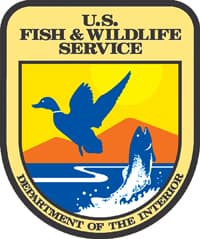Wildlife Restoration Program Reaches 75-year Milestone
OutdoorHub 08.10.12

State and federal conservation leaders joined arms with the hunting and shooting community today to celebrate a success story 75 years in the making, a story authored by the hunters and conservationists of past, written into law by President Franklin D. Roosevelt in 1937 as the Pittman-Robertson Wildlife Restoration Act, and central to future wildlife management.
To mark the occasion Gov. Mark Dayton has declared Aug. 10 Pittman-Robertson Act Day in Minnesota, in honor of conservation legends who three quarters of a century ago stood up for the nation’s natural resources in the face of seemingly insurmountable threats to wildlife populations.
Representatives from the U.S. Fish and Wildlife Service (Service) and Minnesota Department of Natural Resources (DNR) shared their gratitude today with shooting sports manufacturers and distributors and local outdoorsmen and women at Game Fair in Anoka, an annual tradition for Minnesota families and visitors to enjoy the great outdoors.
Federal and state partners stood alongside hunting and shooting industry representatives to commemorate the 75th anniversary of the Wildlife Restoration Program and educate visitors about the program’s legacy.
Through excise taxes on hunting and shooting sports equipment and hunting license revenues, the Wildlife Restoration Program has generated more than $6 billion since revenue collections began in 1939.
“The Wildlife Restoration Program has given Americans the opportunity to enjoy fish, wildlife, and the outdoors for the past 75 years,” said Tom Melius, Midwest regional director of the Service. “With your support, the Service will continue to work hand in hand with our conservation partners at the Minnesota DNR to conserve habitat for fish and wildlife, and recreational opportunities for hunters and shooters for the future.”
Tom Landwehr, DNR commissioner, said the Wildlife Restoration Act, which created a federal tax on firearms and ammunition sales, continues to benefit hunters as these dollars are returned to states to manage wildlife and protect habitat.
“The visionary thinking of 75 years ago created a financial mechanism for restoring and enhancing wildlife populations for the benefit of all Americans,” said Landwehr. “Minnesota has received close to $210 million since the program began. These dollars are used to restore and acquire habitat, conduct wildlife surveys, deliver hunter education and safety programs, and more.” Minnesota’s 2012 allocation was $11.1 million.
Ryan Bronson, conservation program director for Federal Premium Ammunition of Anoka, said “Some very forward-thinking smart people” knew what they were doing 75 years ago. Said he, “Charles Horn, our owner at the time, was among them. He was involved in the negotiations. He, like others, understood the connection between on-the-ground conservation and the long-term health of the hunting community.”
In the early 1900s, when many fish and wildlife species were dwindling in numbers or disappearing altogether, the hunting and shooting industries stepped forward to help state fish and wildlife agencies counteract the crisis.
Manufacturers supported the use of excise taxes on equipment and sought legislation to ensure federal funding would be directed to aid agencies in managing and conserving America’s natural resources and providing hunting access.
For more information about the history of the Wildlife Restoration Program and conservation stories from across the nation, visit http://wsfr75.com.

